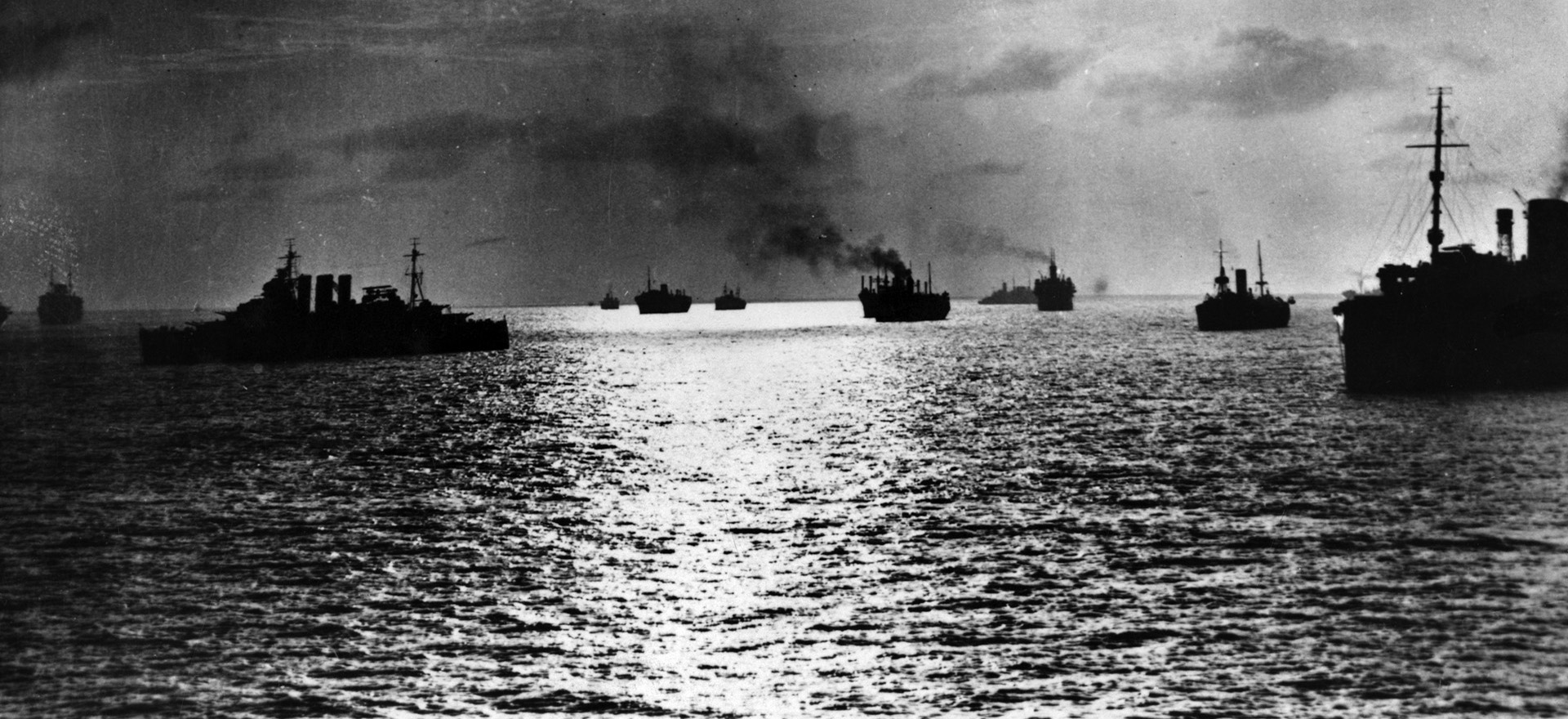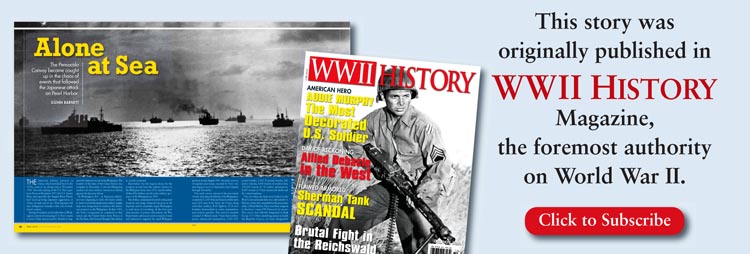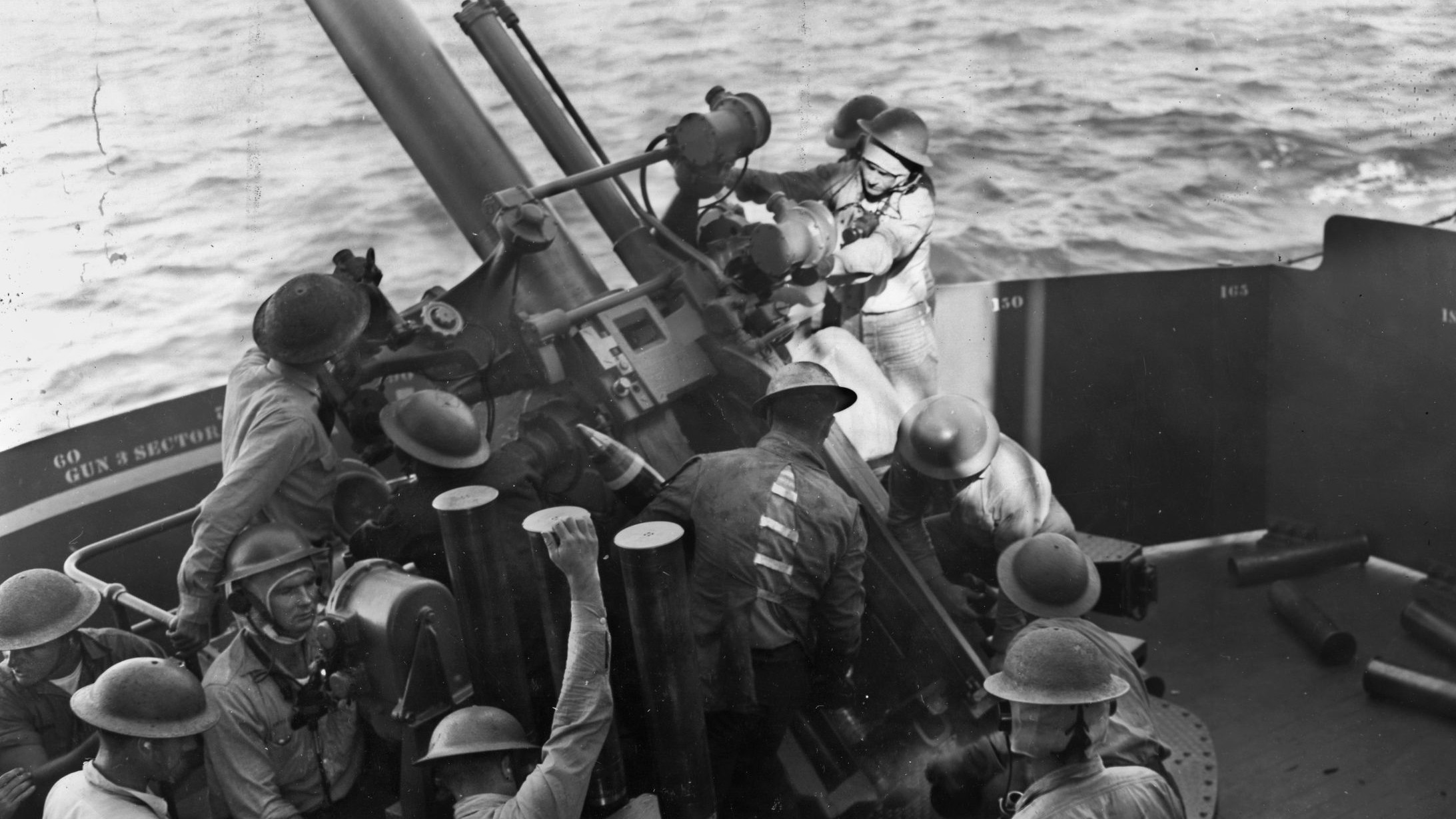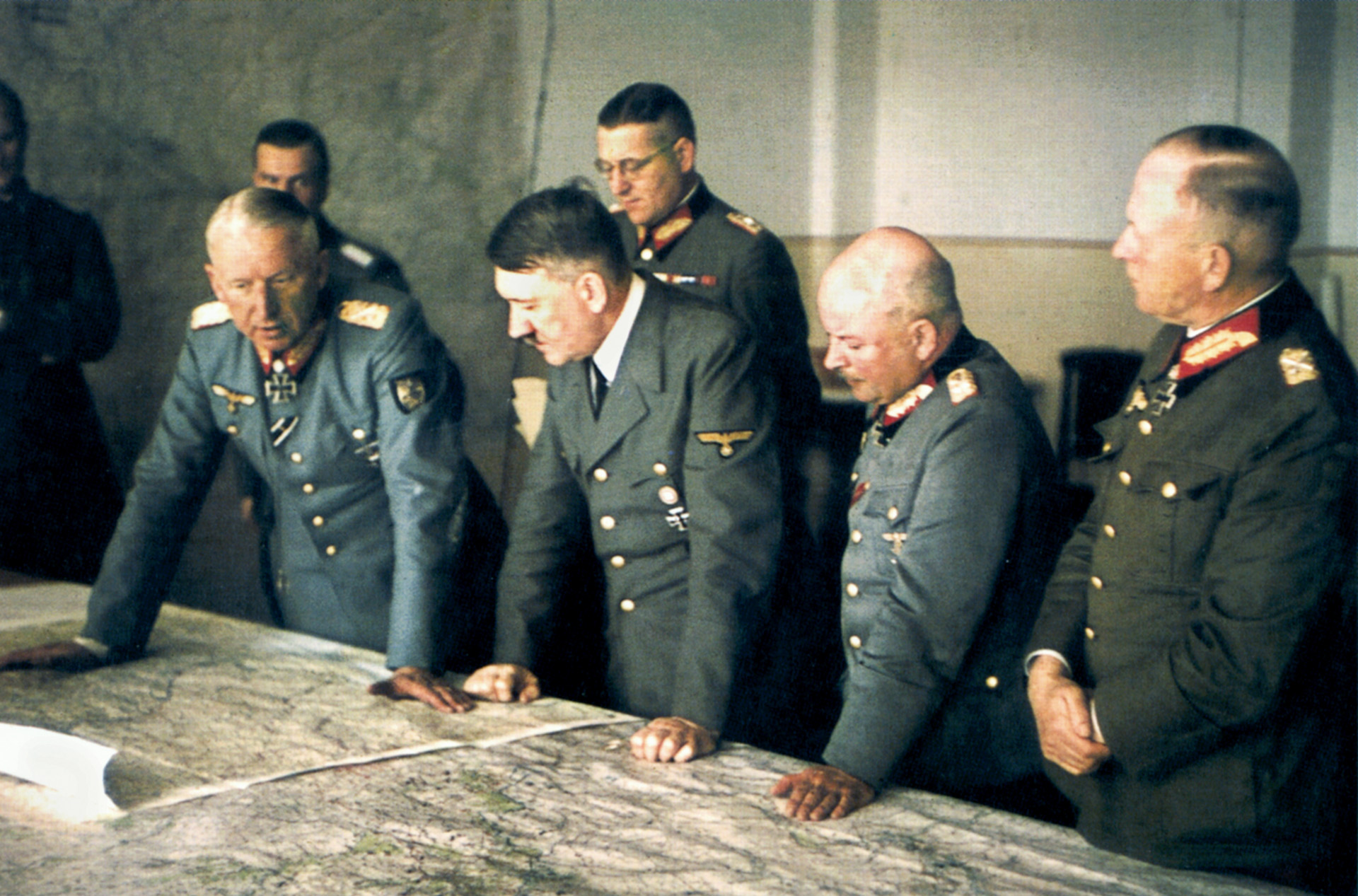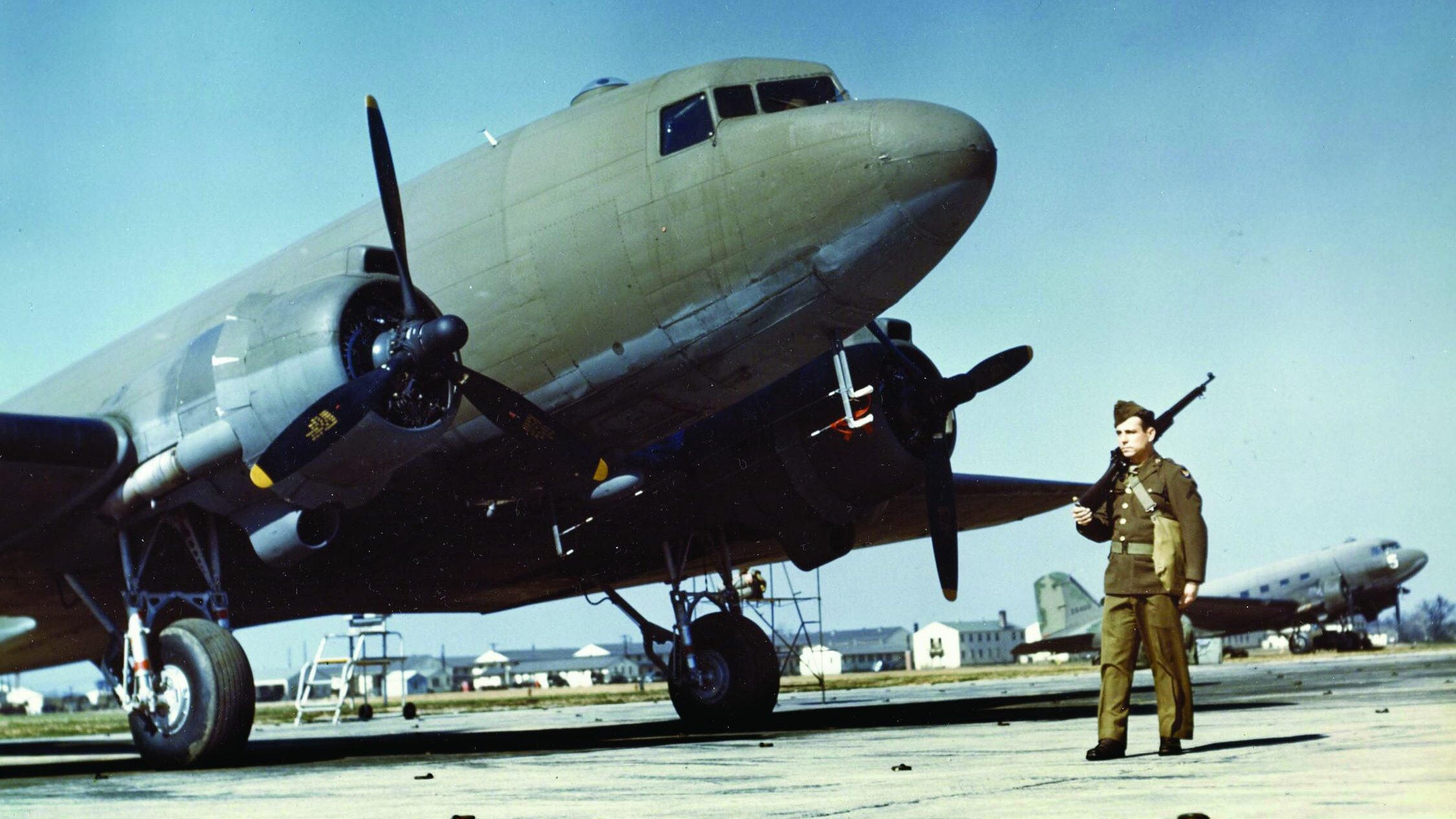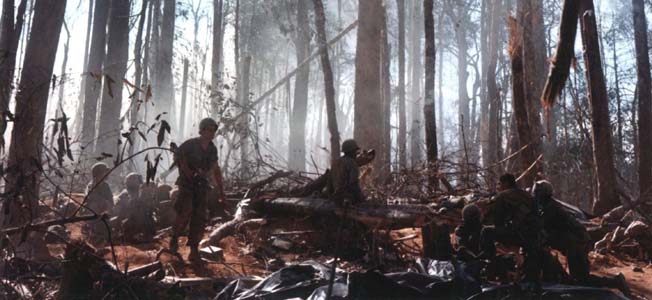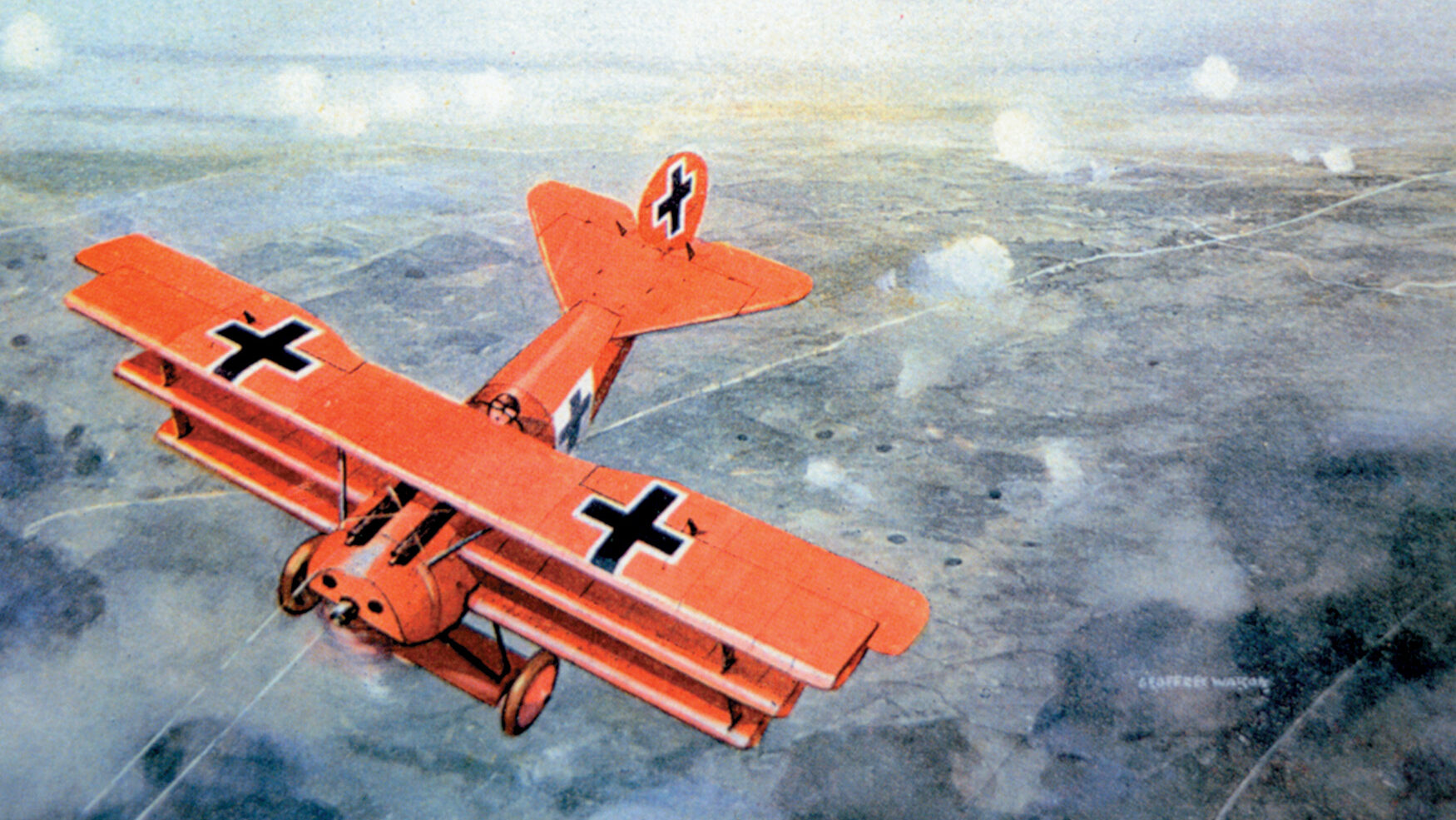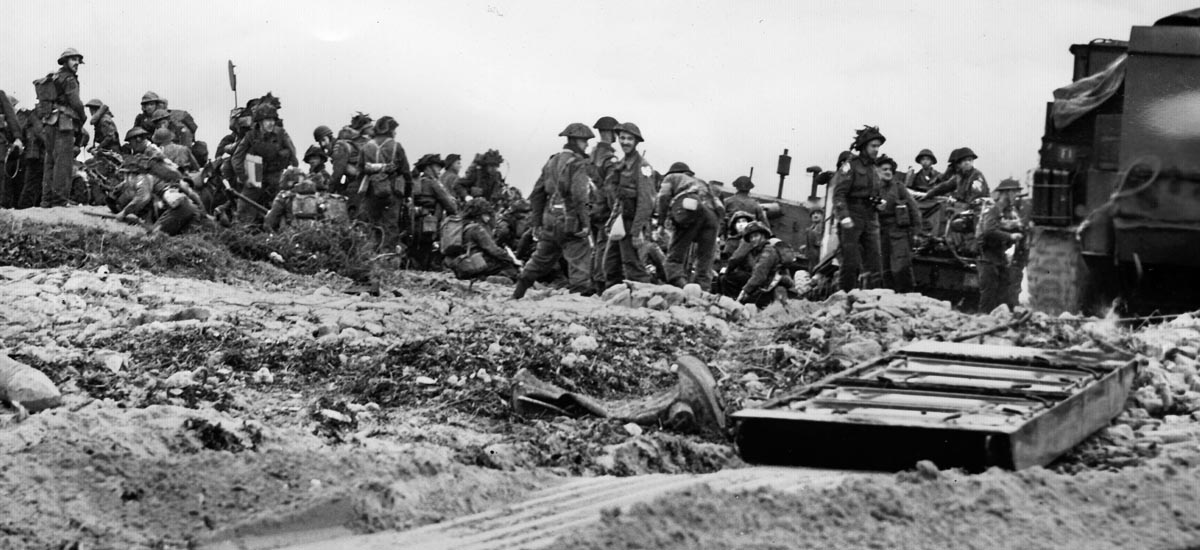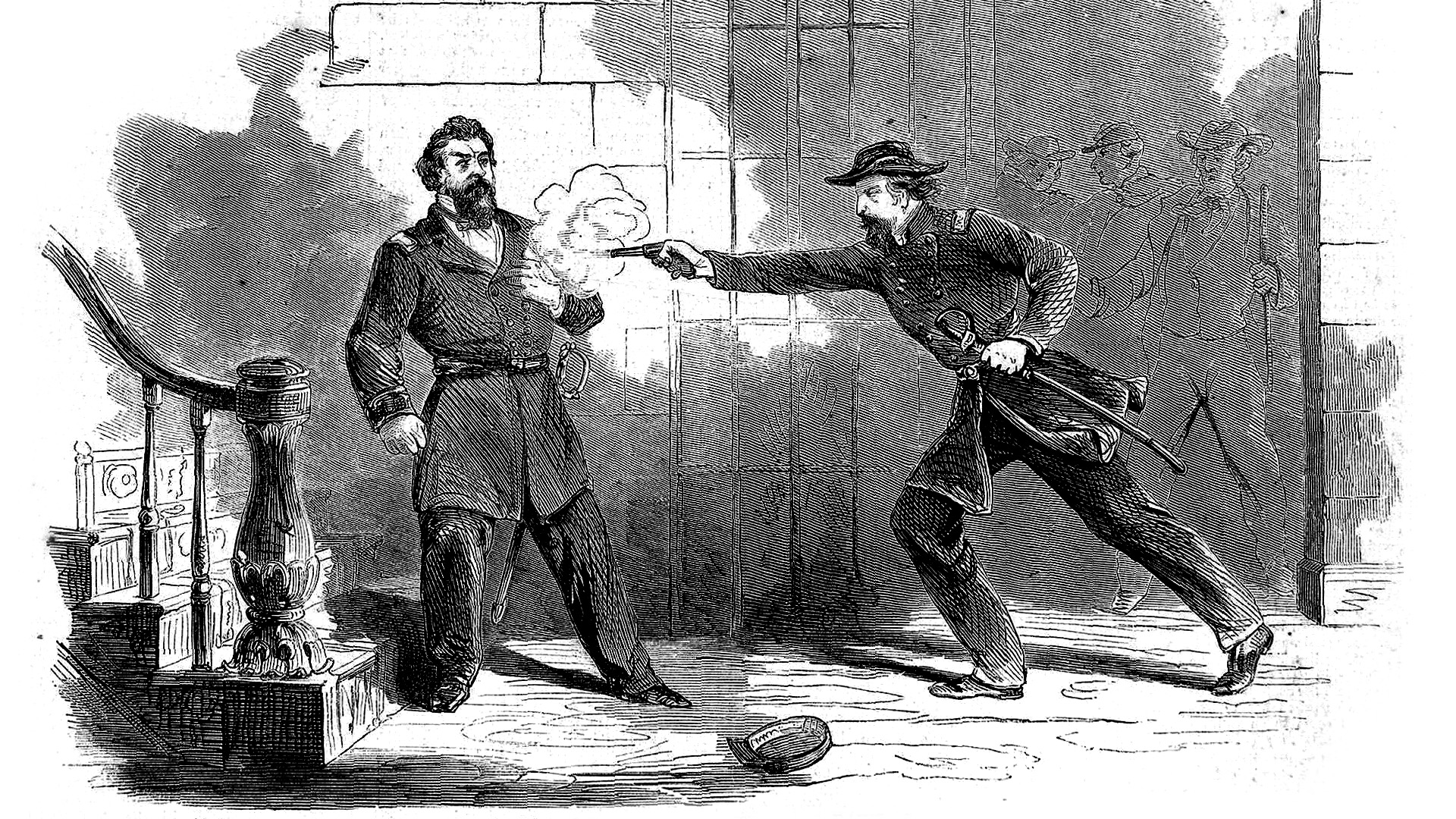By Glenn Barnett
The American military presence in China, which stretched back to the 1850s, came to an abrupt end in November 1941. Since the sinking of the U.S. Navy gunboat Panay in December 1937, the U.S. Asiatic Fleet, and especially the Yangtze River Patrol, had faced growing Japanese aggression in China on land and at sea. That Japanese hid their belligerence beneath a thin veil of traditional courtesy.
During November, naval authorities in Washington ordered all remaining U.S. Navy vessels to leave China and proceed to Manila to augment the defensive forces in the Philippines. The transfer of the ships of the China Station was complete by December 5, but the Philippines needed a lot more military resources to defend against the Japanese threat.
In Washington, D.C., as American authorities were beginning to write off China’s ability to resist overwhelming Japanese military might, steps were being taken to reinforce the American presence in the Philippines. In July 1941, the Army reorganized its command in that nation into the United States Army Forces in the Far East, with General Douglas MacArthur in overall command.
MacArthur was the logical choice for the position; he had been the military advisor to the Philippine Army since 1935, and his father, Arthur MacArthur, served as the military governor of the Philippines in 1900.
MacArthur complained about the antiquated weapons and stingy financial resources at his disposal, and he insistently urged Washington to send more of everything. At the slow pace characteristic of prewar officialdom, the War Department authorized reinforcements of men and material to augment the small Philippine garrison in mid-August 1941. Sporadic convoys of supplies and troops, escorted by Navy vessels, began to arrive in September and continue through November.
One such convoy, typical of the movement of men and materiel slated for the Philippines, consisted of 2,000 National Guard artillerymen and 2,600 men of the Army Air Corps, along with their artillery, P-40 fighters, A-24 dive bombers disassembled in crates, ammunition, and aviation gasoline. The convoy’s manifest included 20 British-made 75mm field artillery pieces, antiaircraft ammunition, 2,000 500-pound bombs, 3,000 30-pound bombs, 340 motor vehicles, 9,000 barrels of aviation fuel, 500,000 rounds of .50-caliber ammunition, 9,600 rounds of 37mm antiaircraft shells and the crated airplanes.
One at a time, the ships were loaded on the West Coast and made their way individually to Hawaii, where they assembled in the peacetime safety of Pearl Harbor. They were then assigned to the heavy cruiser USS Pensacola for escort. The convoy was officially designated as Task Group 15.5. Other identifying names included the Republic Convoy, an Army designation named for the largest of the transport ships, Republic, displacing 17,800 tons. Another name was the Plum Convoy, but it would be popularly known as the Pensacola Convoy after the escorting cruiser.
The Republic (AP-33) was built in 1903. Her career at sea had alternated between being a passenger liner and a Navy troop-transport ship. Three times between the wars, Republic was taken over by the Navy, the last time being in July 1941. Her latest assignment had been to carry troops to Iceland. Her new assignment was to ferry the ground crews and mechanics that would support a squadron of Boeing B-17s of the 7th Heavy Bombardment Group that were being flown over to reinforce air strength in the Philippines. The B-17s these men were to service were the same ones that arrived at Oahu from the mainland in the midst of the attack on Pearl Harbor.
Also aboard Republic were the 190 officers and men of the 453rd Ordnance (Aviation) Bombardment Company along with their equipment. These were the ground crews for the crated P-40 fighters and A-24 dive bombers being transported in the convoy. There were also 48 fighter pilots of the 35th Pursuit Group aboard.
During the ‘20s and ‘30s, USS Chaumont (AP-5) had supported American interests in China with deliveries of supplies, mail, and personnel. In the Pensacola Convoy, she carried civilian workers and cargo that included aircraft, bombs, guns, ammunition, and other supplies.
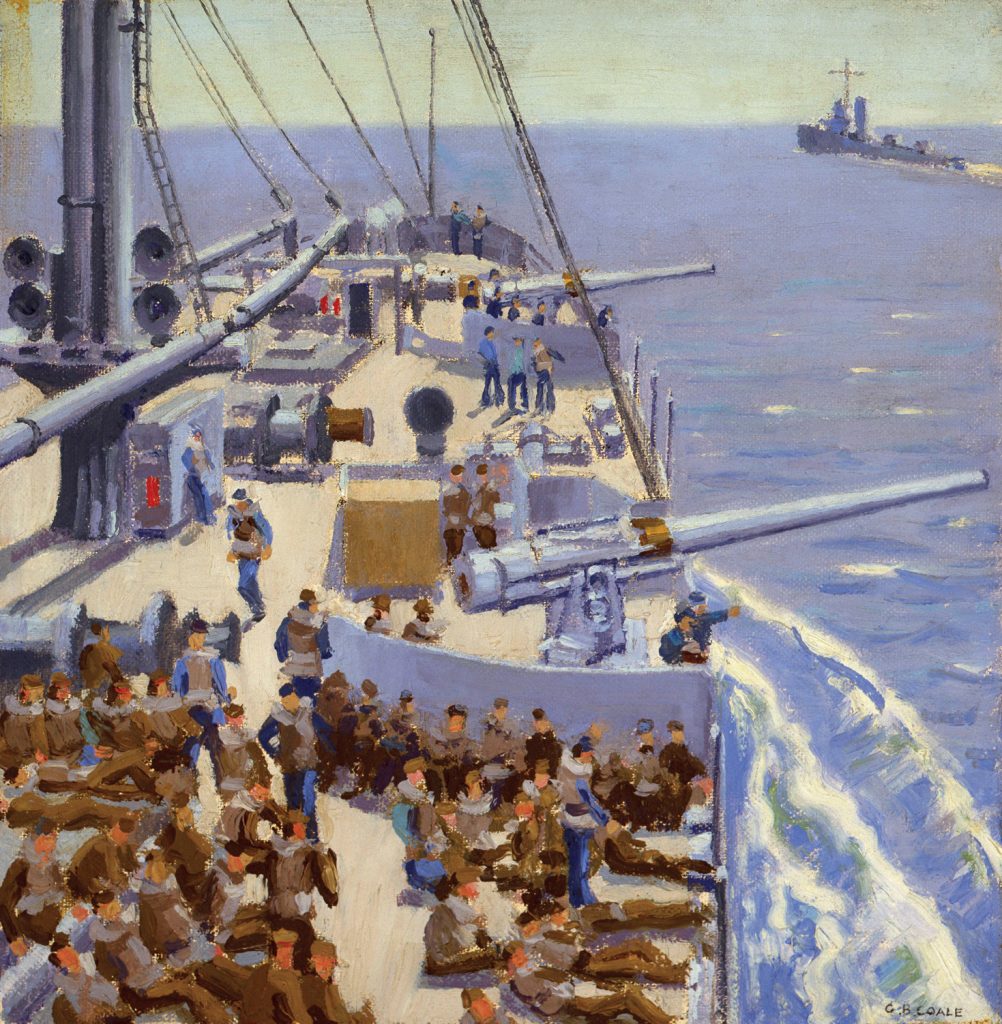
The convoy also included two U.S. Army transport ships. The USAT Willard A. Holbrook, (formerly the SS President Taft) functioned as a passenger-and-mail liner until June 1941, when she was requisitioned by the War Department for use by the Army. For this convoy, she would embark the men of the 147th and 148th Field Artillery of the South Dakota, Texas, and Idaho National Guards. Other passengers included 39 newly graduated pilots awaiting assignment to units in the Philippines. The USAT Meigs was purpose-built as an Army freighter and transport in 1921; Meigs would carry 52 crated A-24 dive bombers on her crowded decks, as well as munitions and general supplies.
The SS Admiral Halstead was a U.S. merchant ship, which carried 18 crated P-40 fighter planes and 3,000 barrels of high-octane aviation fuel (avgas) in the convoy.
The SS Coast Farmer carried general cargo and reportedly some peacetime commercial goods for Manila shops. She would later be one of only three ships to slip through the Japanese blockade of the Philippines to land supplies on Mindanao. Unfortunately, the guns and munitions she carried never reached Luzon and were either destroyed or captured by the Japanese.
The M.S. Bloemfontein was a Dutch armed merchantman. Her prior service included taking American airmen to China and Burma to serve with the First American Volunteer Group, the famed Flying Tigers. In the convoy, she carried 75 aircraft ground crewmen. She also carried the headquarters staff of the 26th Field Artillery Brigade, as well as the 2nd Battalion, 131st Field Artillery, along with their guns, including 48 British-made 75mm guns. Finally, she carried some civilian passengers and cargo meant for the Dutch East Indies.
The USS Niagara (PG-52) shared responsibilities for escort duty. Built as a private yacht in 1929, she was purchased by the Navy in 1940 and refit as a patrol gunboat and subchaser.
The heavy cruiser USS Pensacola, mounting 10 eight-inch guns in four turrets, was commissioned in February 1930. The lead ship of her class, the cruiser displaced 9,200 tons, and her complement totaled 85 officers and 445 crew.
Once the convoy was assembled at Pearl Harbor, it departed on the evening of November 29, 1941. Cruising speed was about 10 knots to match that of the slowest ship. The convoy did not steam directly toward the Philippines but veered to the south to keep clear of the Japanese-held Marshall Islands, administered under a post-World War I League of Nations mandate. The planned approach to the Philippines included steaming south of New Guinea and then north through the Dutch East Indies to Manila.
The next day, the frivolity ended abruptly. Early in the morning, the convoy’s radio operators began receiving disturbing messages: “AIR RAID ON PEARL HARBOR X THIS IS NO DRILL.” Soon afterwards, Commander Guy Clark, commander of the Republic, was handed a message that read, “Japan started hostilities. Govern yourself accordingly.” Clark relayed the message by loudspeaker to his crew.
All ships were put on high alert. The crews brought out their stores of wartime naval-gray paint and worked all day to cover their ships and lifeboats with new coats to make them less visible. Extra lookouts were assigned, and all guns were manned 24 hours a day. Everyone was ordered to put on life jackets and carry full canteens of water. Life rafts were placed on deck for easier access.
At the same time, all flammable substances and objects were thrown overboard, including the ships’ pianos. Every sailor in the convoy scrounged for weapons and ammunition. Search parties on each ship went below to locate guns that could be used for defense. Back in September 1940, Pensacola was one of the first six ships to be equipped with the RCA-made CXAM naval radar system, which was now being constantly monitored.
On Republic, four 75mm artillery guns of the 453rd Ordnance (Aviation) Bombardment Company were found, hauled topside, and secured to the deck. Unfortunately, no ammunition was located aboard. However, while in drydock on the west coast before her departure, four 3-inch guns and one 5-inch gun had been mounted on the ship. These were now manned and made ready.
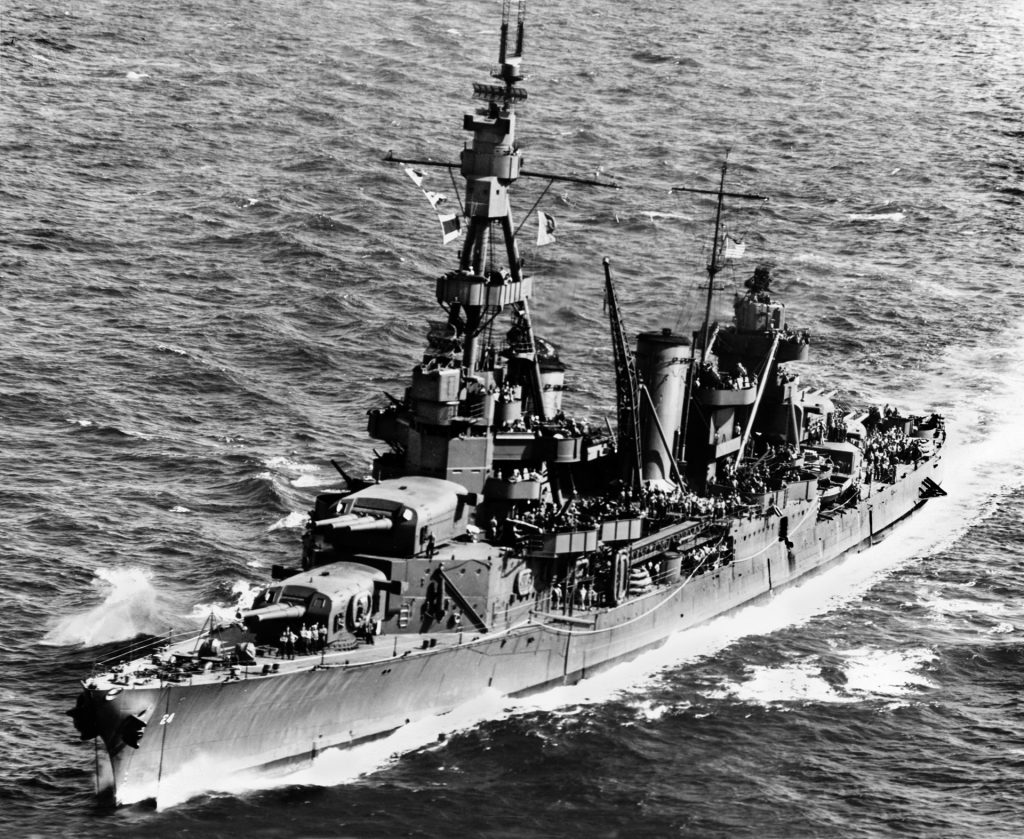
Aboard Holbrook, meanwhile, the men had found their 75mm guns and ammunition but were compelled to improvise gun sights and mountings for the artillery pieces once they were brought on deck. The ordnance men also improvised deck mounts for the .50-caliber machine guns originally meant for airplanes.
Even as the crews—Army, Air Corps, and Navy—prepared for war, the convoy continued to steam slowly toward the Philippines. The next day, news came that the Japanese were landing on Luzon and that American air and sea assets there were being bombed. Officers back in Hawaii had a lot on their plates, as the sunken battleships were still smoldering in Pearl Harbor. No one was sure what to do about a small convoy in the middle of the ocean with nowhere to go.
Another radio message complicated matters: a Japanese task force was spotted in the Ellice and Gilbert Islands, a British possession that included the soon-to-be famous Tarawa Atoll. The Japanese flotilla was only 300 miles away, supporting the invasion of those islands. To buy some time, authorities in Hawaii ordered the convoy to steam to the port of Suva in the Fiji Island group.
On December 9, it was determined that the convoy should return to Hawaii to reinforce the garrison there. The Joint Board, forerunner of the Joint Chiefs of Staff, approved this move, and orders were issued for the convoy to return to Pearl Harbor.
Army Chief of Staff General George C. Marshall had misgivings. Although the defense of Hawaii loomed large in the minds of the war planners, he believed that recalling the convoy would indicate to General MacArthur that he and the Philippines were being abandoned.
While the convoy reversed course in compliance with the new orders, another meeting was held the next day to reconsider its destination. This time it was at the White House, where it is said that President Franklin D. Roosevelt suggested the convoy be sent to the Southwest Pacific, where reinforcement was desperately needed. The issue was referred to the Joint Board, which approved the president’s suggestion and ordered the convoy to proceed to Brisbane, Australia, via Fiji. Hawaii would be supplied from the mainland. Official orders arrived on December 12, and the beleaguered convoy reversed course yet again.
The ships arrived at the Fijian port of Suva on December 13, allowing one more day to continue painting everything gray and rummage through the disorganized cargoes. For the sailors and soldiers aboard the ships, confusion reigned, but at last, they had clear and decisive orders: they were going to Australia.
While in Fiji, the crews had only a limited amount of time to sort out their cargoes and match up guns, ammunition, and many of the correct parts with their intended equipment.
In the lazy days before the war, stevedores were typically somewhat casual in their approach to loading cargo aboard a ship. Where and how materiel were stored didn’t really seem to matter; the crews could sort it out upon arrival at their destination. This attitude now greatly slowed the combat-preparation efforts of the Pensacola Convoy, and cargo-storage procedures would hereafter become a matter of great priority among the American Naval and Merchant fleets.
The news of the convoy’s redirection reached General MacArthur on December 13. He asked about the possibility of escorting the ships directly from Brisbane to Manila, emphasizing how limited his resources were. He wired Marshall that the Navy was able “…with its own surface forces and with assistance of Australian and Dutch naval and air forces to bring in the present convoy and keep my line open.”
The limited British and Dutch forces, however, were completely preoccupied with the defense of Singapore and the Dutch East Indies, while the Japanese, with superior naval, land, and air forces, were creating a blockade around the Philippines.
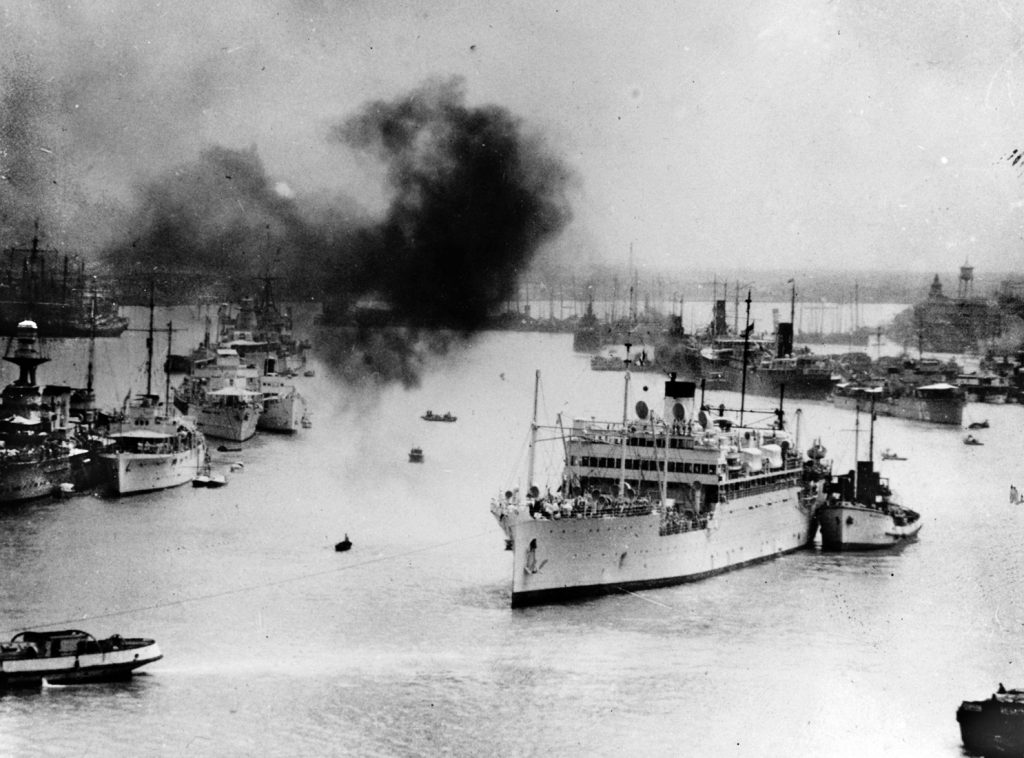
MacArthur continued to insist on support that was beyond the ability of the American military to provide in a timely manner. Meanwhile, the convoy put out to sea from Suva on December 14. The next day, General Leonard Gerow of the Army’s War Plans Division sent a personal note to General Marshall, relating that the Pensacola Convoy was due in Brisbane shortly and asking about the Navy’s ability to escort the convoy to the Philippines. “If the ships can go directly to Manila, the supplies, except aircraft, should not be unloaded in Australia.” The planes could be off loaded in Brisbane, assembled, and flown to Manila via the Dutch East Indies.
More discussions were held at the White House. President Roosevelt told the Navy to do all it could to assist the Army in reinforcing MacArthur. Marshall promised MacArthur that there would be “no wavering in the determination to support you,” and that fighters and bombers would be rushed to the Philippines as quickly as possible. The only fighters and bombers immediately available, however, were still in crates aboard the Pensacola Convoy, which was still at sea a few days out from Brisbane.
The American military establishment in Australia, meanwhile, was making plans to meet, escort, and protect the incoming ships. On December 12, the heavy cruiser HMAS Canberra (D33) and the light cruiser HMAS Perth (D29) put to sea from Sydney, stopping at Brisbane along the way on December 15. Rushing eastward from there, they were joined by the New Zealand light cruiser HMNZS Achilles (70) near New Caledonia. On the same day, the troops aboard the Pensacola Convoy were given a new name: they were to be known as Task Force South Pacific. The senior officer in the convoy, Brig. Gen. Julian F. Barnes, was placed in command.
The Allied ships would meet up with the Pensacola and her charges on December 19. Both groups of ships were slowed by the wartime necessity of steering a zigzag course to defend against submarine attacks. The slower pace that the Americans maintained to allow the slowest ship to keep up also impeded their progress.
On December 21, the American ships were joined by the sloops HMAS Swan (U74) and Warrego (U73). When the two sloops joined up, they immediately began anti-submarine and anti-mine patrols, replacing Niagara, which had been recalled to Pearl Harbor from Suva. Also that day, the convoy came within range of Lockheed Hudson patrol bombers of the Royal Australian Air Force (RAAF), which, in their coastal reconnaissance role, provided further protection against enemy attack.
Aboard the American ships, the original trip was taking longer than planned, and the crews and passengers within the Pensacola Group had their rations cut to two meals a day. The convoy completed its approach to Brisbane without interference.
The four-nation flotilla (American, Dutch, Australian, and New Zealander) arrived at Brisbane’s Moreton Bay at noon on December 22. A harbor pilot came aboard Pensacola, and she was refueled immediately from an Australian fleet tanker. The other ships then took their turns at fueling.
Meanwhile, crowds gathered from Brisbane, 14 miles upriver. The city’s 300,000 people were jubilant. Australians came out to cheer the first Americans to arrive in their country during the war. As one observer put it, “Brisbane locals gave them a right royal welcome.” Their arrival underscored the fact that most of the military manpower of Australia was away fighting a losing battle in Malaya and holding off German General Erwin Rommel in North Africa.
The troops gladly disembarked the next day.
Task Force South Pacific would soon receive yet another name. The few troops aboard were now known as the United States Forces in Australia (USFIA), still temporarily under the command of General Barnes. The number of Americans who would be sent to Australia during the war (including the author’s father) would eventually outnumber the population of Brisbane.
Without facilities to house the Americans, their Australian hosts set up tent cities at two local racetracks, which would become Camp Ascot and Camp Doomben. From the ships, the American soldiers and airmen marched directly to the new camps. General Barnes and his staff were housed at the Lennon Hotel in town, which became his headquarters and later the home and unofficial headquarters of General MacArthur and his staff.
It was hoped that the convoy’s men and supplies could quickly be shipped to Manila, but the hard-charging Japanese quickly closed any window of opportunity. Nevertheless, the artillerymen and sailors got to work immediately, unloading the ships, organizing the material, and reloading the ships for ease of unloading—a task that took six days to complete.
The Air Corps ground crews got to work assembling the planes from the parts and pieces sent over to them by the artillerymen who were unloading the ships. Due to the emergency situation in the Philippines, the men worked on Christmas Day, taking a break for a Christmas dinner consisting of bologna sandwiches.
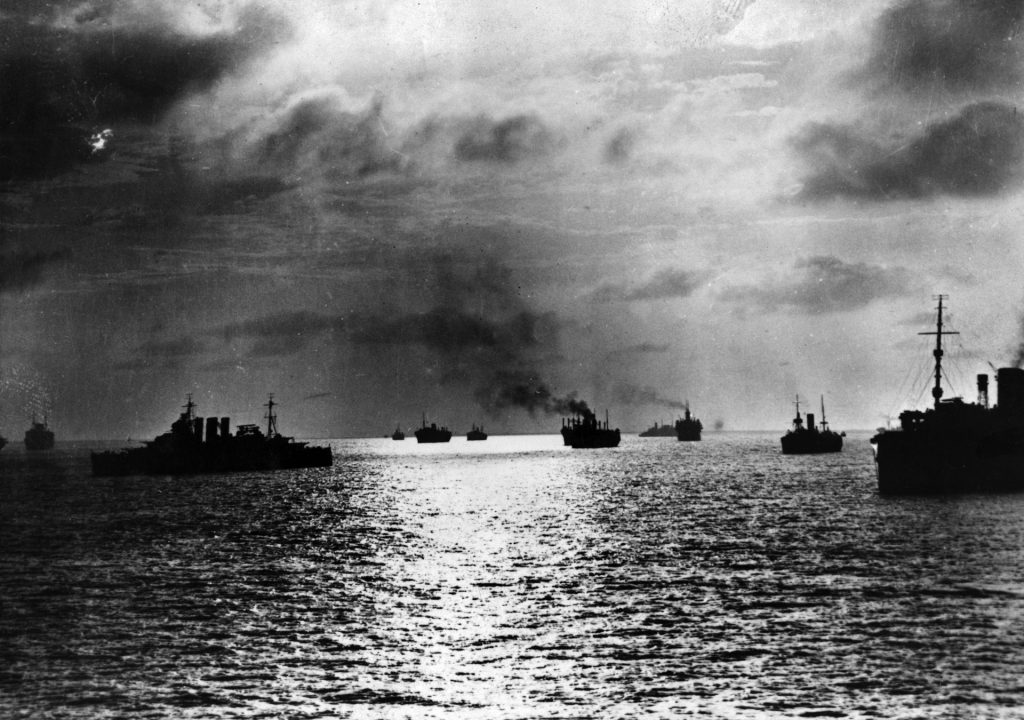
As they assembled the uncrated airplanes, the crews discovered that there had been some serious omissions when the aircraft were loaded onto the ships stateside. There was no engine coolant to be found for any of the planes, and none of the dive bombers had their trigger motors, gunsight solenoids, gun mounts, or self-sealing gas tanks.
At the command level, General Barnes was replaced on December 26 by Brig. Gen. Henry B. Claggett, who had flown in from Manila. MacArthur wanted his own men directing the efforts to reinforce him. Barnes temporarily became Claggett’s chief of staff. It was intended that General George Brett would arrive from an Allied conference in Chungking, China, to take command of all U.S. Army forces in Australia. He reached Australia on February 23, 1942, and would remain in command until MacArthur arrived from the Philippines.
In late December, though, there was a rush to support the deteriorating American position in the Philippines. On the evening of December 28, Pensacola stood out to sea, joined by the fastest of the transports, Chaumont and Holbrook. Bloemfontein caught up with them on January 2, 1942. Together, they carried two battalions of artillerymen, their guns, and ammunition.
The next day, Pensacola reached the Torres Strait between Australia and New Guinea, where she was relieved by the heavy cruiser USS Houston (CA-39) and several destroyers, which escorted the mini-convoy to Darwin while Pensacola prepared to return stateside.
Most of the artillerymen went ashore at Darwin due to new Japanese activity in Borneo, which effectively cut them off from the Philippines. Only the 2nd Battalion, 131st Field Artillery Regiment continued on to Surabaya in eastern Java to support Allied forces there. When the Dutch surrendered, most of the 2/131 became POWs for the duration of the war. The officers of the field-artillery headquarters, however, evacuated Java on February 27, 1942, and returned safely to Australia.
The rapid advance of the Japanese in the Dutch East Indies also blocked 17 out of 18 P-40 fighters from getting through. They made it as far as Java, where they joined the fight, but their pilots and crew were evacuated on March 1, and the planes were turned over to the Dutch.
As for the A-24 dive bombers, 11 of them made it to Java, but all were lost in combat. Most of the rest would later be shot down on July 26, 1942, while attacking Japanese shipping off Buna, New Guinea. None of the planes, men, or supplies of the Pensacola Convoy ever reached MacArthur’s command in the Philippines.
As for the fate of the ships in the convoy, Republic would survive the conflict and was converted to a hospital ship at war’s end. Chaumont would also be converted to a hospital ship and renamed USS Samaritan (AH-10). Holbrook survived the war doing the important work of carrying men and supplies wherever they were needed. Meigs was sunk on February 19, 1942, in a sudden attack by Japanese bombers on Darwin harbor.
Halstead was also in the harbor at Darwin with Meigs but was the only ship not destroyed or damaged on February 19 or during follow-up raids. Only six men were aboard Halstead during the repeated attacks; manning the two available machine guns and using skilful steering, they warded off every Japanese assault. These six men were awarded the Merchant Marine Distinguished Service Medal. Halstead survived the war and was decommissioned in 1949.
Coast Farmer was sunk by the Japanese submarine I-11 near Jervis Bay in New South Wales in July 1942. Bloemfontein was used by the Americans as a troop-and-cargo ship for the remainder of the war and returned to the Netherlands at the conflict’s end. Niagara was sunk on May 23, 1943, by Japanese bombs off Tulagi during the battle for Guadalcanal.
Pensacola was active throughout the war. Among other assignments she participated in the Battle of Midway, the Battle of Santa Cruz, the Naval Battle of Guadalcanal, the Battle of Tassafaronga (where she was heavily damaged), and the Battle of Leyte Gulf. She would survive the war, as well as two atomic-blast tests at Bikini Atoll. In 1948, her hulk was sunk off the Washington state coast as a barrier reef.
Glenn Barnett is a retired college instructor and aerospace engineer who worked on the Apache helicopter, B-1B bomber, and the space shuttle. He is a frequent contributor to WWII History.
